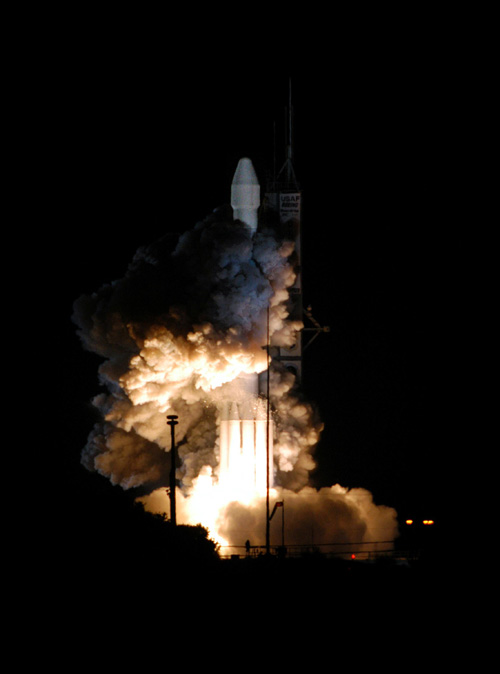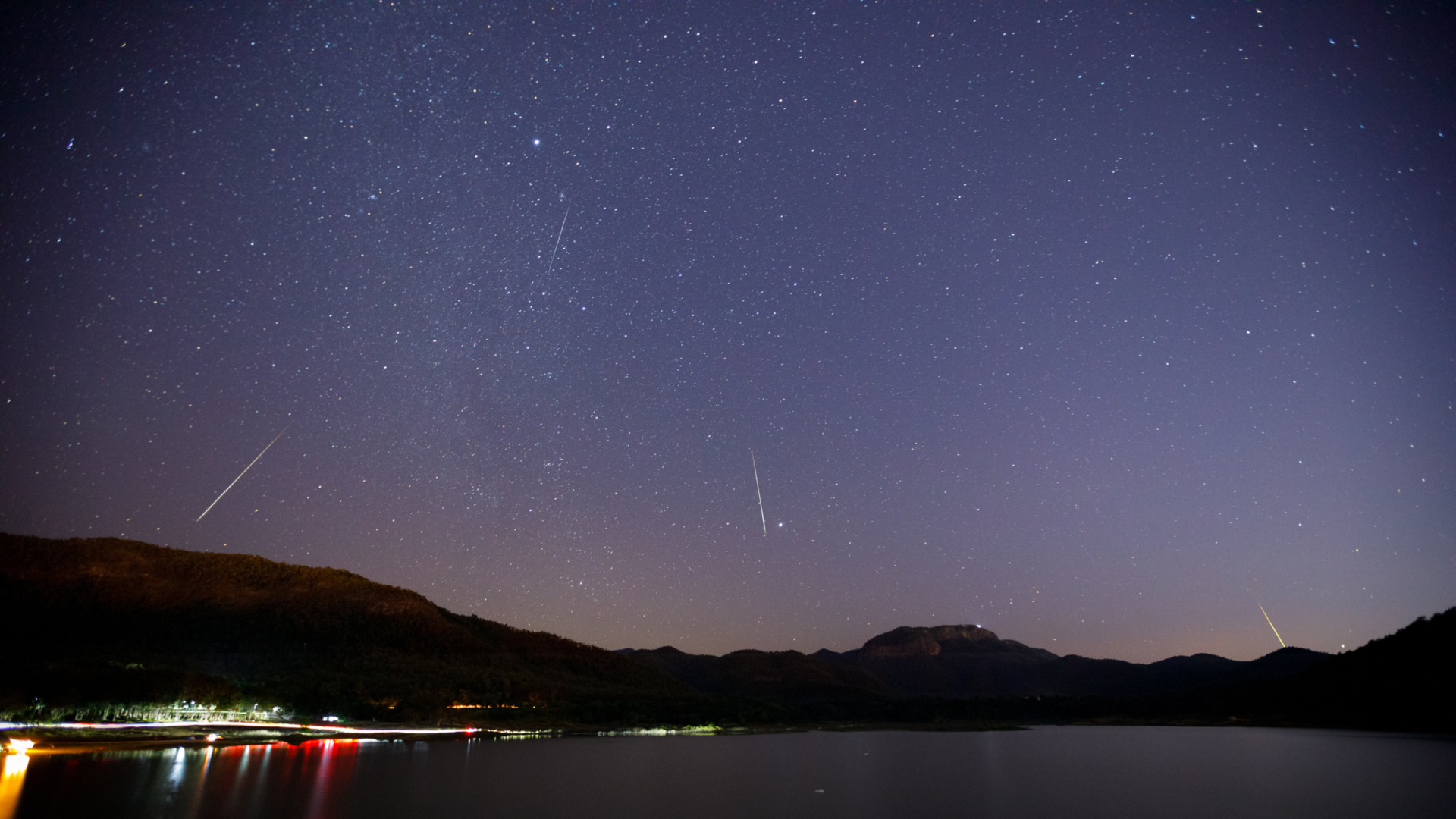NASA Sends Mercury a MESSENGER

Despite a 24-hour delay, aNASA spacecraft bound for Mercury was successfully launched early Tuesday, the first step in aseven-year journey to the small planet.
A Boeing-built Delta 2 rocket shot the spacecraft MESSENGERoff planet at 2:15:56 a.m. EDT (0615:56 GMT) on a pillar of flame above itslaunch pad at NASA's Cape Canaveral Air Force Station. The on-time space shoteasily made its 12-second window, with none of the delays that scrubbeda previous attempt to launch the spacecraft on Aug. 2.
"This was another great Boeing and NASA success as we bidMESSENGER farewell," said Chuck Dovale, NASA launch director at Kennedy SpaceCenter in Florida, after the launch.
MESSENGER,an acronym for MErcury Surface, Space ENvironment, GEochemistry, and Ranging,is the first NASA spacecraft to Mercury since Mariner 10 passed by the planetthree times between 1974 and 1975.
""Mercury is very hard to get to," explained MESSENGERscience team member Ralph McNutt, from the Johns Hopkins University AppliedPhysics Laboratory, during the Aug. 2 launch attempt. "To get there, theMESSENGER spacecraft is about 55 percent fuel, about the same amount as theCassini spacecraft to Saturn."
MESSENGER is also expected to provide some hints toquestions about Mercury's density, interior and exterior composition, as wellas its surface features and magnetic field. The spacecraft is taking aroundabout path to Mercury, swinging by three inner planets before enteringorbit around Mercury in March 2011.
There were some weather concerns prior to MESSENGER'sliftoff. Nearby cloud cover, and the failure of launch weather balloons toreach high into the atmosphere gave launch planners some concern. But theclouds dissipated and one last batch of weather balloons reached theirdesignated height of 90,000 feet before launch.
Breaking space news, the latest updates on rocket launches, skywatching events and more!
A good start
Cape Canveral launch officials applauded as MESSENGER'sDelta 2 booster sent the spacecraft on its way.
Four minutes into the flight, the spacecraft-rocket comboshed its first stage and ignited its second stage for a four-minute burn toreach orbit. After a 37-minute coast phase, MESSENGER's Delta 2 booster againfired its second stage for a three-minute burn. The spacecraft's third stagealso made a short, two-minute maneuver before MESSENGER separated from itsrocket and began its trip to Mercury about 59 minutes after launch.
MESSENGER then loosed its two solar panels to generatepower and switched off its batteries. The event marked the end of the first legof MESSENGER's five billion-mile journey to Mercury. Over the next seven years,the spacecraft will swing by the Earth once, Venus twice and Mercury threetimes before reaching a final orbit around the small planet.
After a year of science observations, the spacecraft willhave completed its primary mission.
"The mission ends with a whimper," McNutt said, addingMESSENGER's fuel tanks were budgeted to provide enough propellant for a singleyear around Mercury. "By about 2015 or 2016, gravity will crash [MESSENGER]into the surface of the planet."
Dovale said NASA's next science spacecraft launch willcome on Oct. 7, when the agency will launch the Swift Gamma Ray Burst Exploreratop a Boeing Delta 2 in a space shot to be staged from Cape Canaveral AirForce Station.

Tariq is the award-winning Editor-in-Chief of Space.com and joined the team in 2001. He covers human spaceflight, as well as skywatching and entertainment. He became Space.com's Editor-in-Chief in 2019. Before joining Space.com, Tariq was a staff reporter for The Los Angeles Times covering education and city beats in La Habra, Fullerton and Huntington Beach. He's a recipient of the 2022 Harry Kolcum Award for excellence in space reporting and the 2025 Space Pioneer Award from the National Space Society. He is an Eagle Scout and Space Camp alum with journalism degrees from the USC and NYU. You can find Tariq at Space.com and as the co-host to the This Week In Space podcast on the TWiT network. To see his latest project, you can follow Tariq on Twitter @tariqjmalik.
